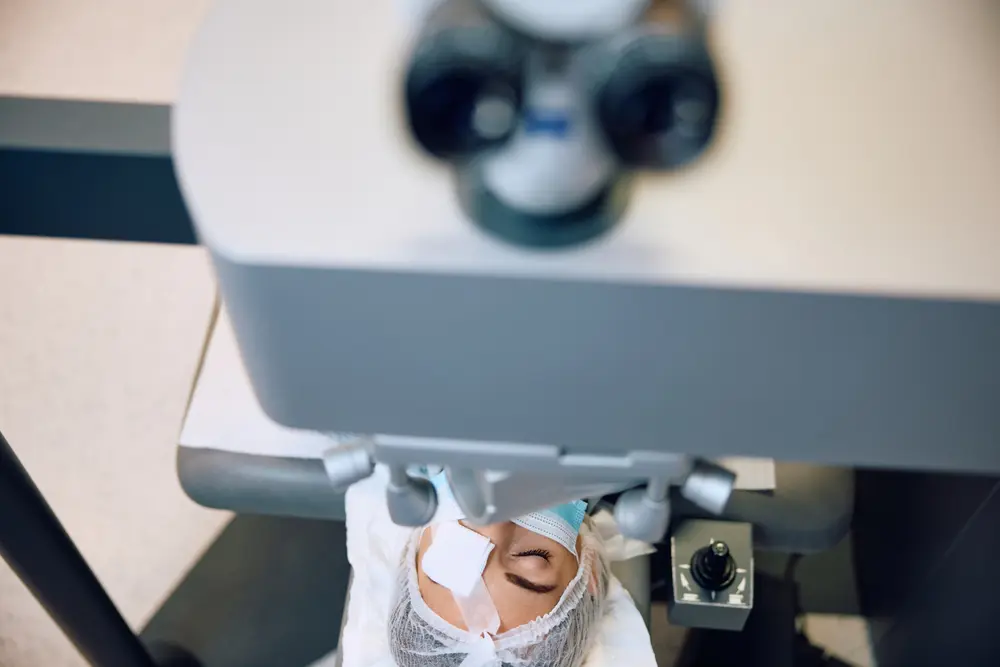
Tired of scratching your glasses, wearing them, and misplacing them? Two popular procedures have emerged as leading vision enhancers: SMILE and LASIK eye surgeries. Both offer transformative benefits for those seeking clearer vision without the need for glasses or contact lenses.
In this blog post, we’ll discuss SMILE and LASIK eye surgeries, exploring their procedures, advantages, drawbacks, and suitability for different individuals. Whether you’re considering vision correction for the first time or exploring alternative options, understanding the differences between SMILE and LASIK can help you make an informed decision about which procedure best aligns with your needs and lifestyle.
Advantages and Limitations of SMILE Procedure vs. LASIK
SMILE (Small Incision Lenticule Extraction) Eye Surgery
Procedure Overview and Surgical Techniques
SMILE is a minimally invasive, flapless procedure used to correct vision. During the surgery, a femtosecond laser creates a small incision in the cornea to remove a small amount of tissue, reshaping the cornea and correcting refractive issues. Unlike LASIK, SMILE does not involve creating a corneal flap, which leads to certain advantages.
Vision Correction Range
SMILE is great for correcting myopia (nearsightedness) and astigmatism within a certain range. However, it is not suitable for individuals with severe refractive issues or those requiring significant correction.
Safety Profile
SMILE surgery has shown to be safe eye surgery, with fewer reported cases of dry eye syndrome and flap-related complications compared to LASIK.
Recovery Time
Patients undergoing SMILE surgery experience faster recovery times compared to LASIK due to the smaller incision size and preservation of corneal tissue. This causes less discomfort and quicker visual rehabilitation post-surgery.
LASIK (Laser-Assisted in Situ Keratomileusis) Eye Surgery
Procedure Overview and Surgical Techniques
LASIK involves creating a corneal flap, which is lifted to allow the laser to reshape the corneal tissue underneath, correcting refractive errors. This flap-based approach differentiates LASIK from other procedures like SMILE. LASIK is a popular choice for vision correction.
Vision Correction Range
LASIK offers a greater range of correction for various refractive errors, like myopia, hyperopia (farsightedness), and astigmatism. It is good for individuals with mild to moderate refractive errors, providing precise and customizable treatment options.
Safety Profile
While LASIK has a track record of safety, there is a potential for flap-related issues and dry eye syndrome, however, these complications are rare. Technology advancements and new surgery techniques have helped minimize risks.
Recovery
LASIK patients experience quicker recovery compared to other procedures due to the flap-based approach. However, the longer-term healing of the corneal flap requires some time, and patients may experience fluctuations in vision and minor discomfort.
Smile Eye Surgery Pros and Cons
Here are a few factors to consider when deciding between SMILE eye surgery and LASIK:
Refractive Error and Corneal Thickness
Your refractive error, like myopia or astigmatism, and corneal thickness are important things to consider. Individuals with a greater range of refractive errors may prefer LASIK, while SMILE may be better for people with specific conditions or thinner corneas.
Lifestyle and Activities
LASIK offers quicker recovery times and minimal discomfort, making it great for individuals with active lifestyles. On the other hand, SMILE may be better for individuals partaking in contact sports or activities with a higher risk of eye trauma due to its flapless nature.
Personal Preferences and Risk Tolerance
Take into account your personal preferences and risk tolerance. LASIK involves creating a corneal flap, which may pose a higher risk of flap-related complications. If you prefer a minimally invasive approach, SMILE may be a better option for you.
Consultation with an Eye Care Professional
Importance of Discussing Individual Needs and Expectations
Schedule a consultation with an eye care professional to discuss your individual needs, expectations, and concerns. They can provide personalized guidance and recommendations based on your eye health, lifestyle, and goals.
Comprehensive Preoperative Evaluation
A comprehensive preoperative evaluation is important to determine your suitability for either SMILE or LASIK. This evaluation includes assessing your ocular health, refractive error, corneal thickness, and other factors to ensure the safety of the chosen procedure.
Making Informed Choices for Vision Correction
Seeking guidance from an eye care specialist is key to making informed decision-making. Before surgery, a thorough exploration of options is essential. By taking proactive steps and seeking expert advice, individuals can confidently pursue vision correction aligned with their unique needs, prioritizing optimal eye health and outcomes. To consult with a specialist, reach out to Toledo LASIK today.





